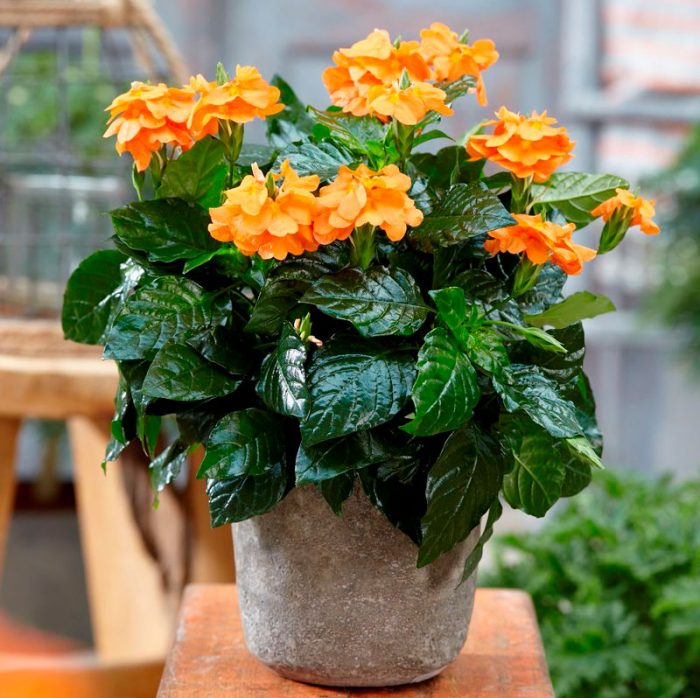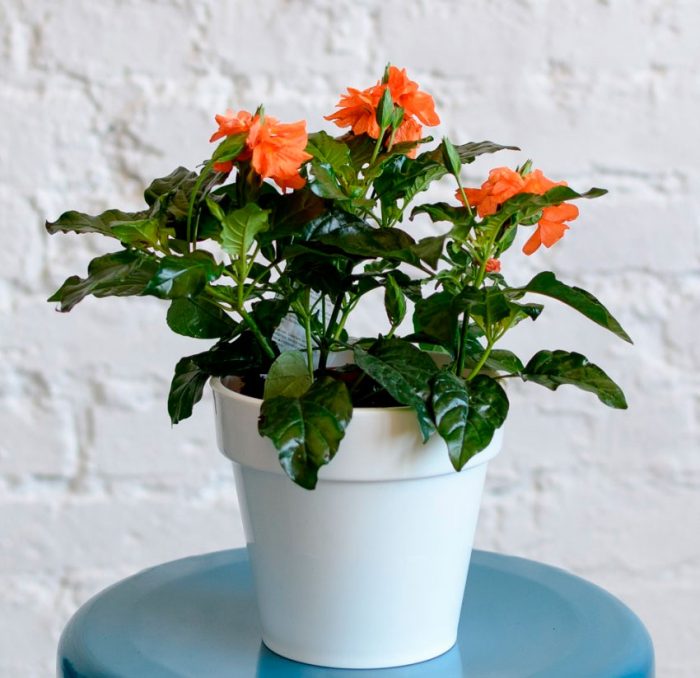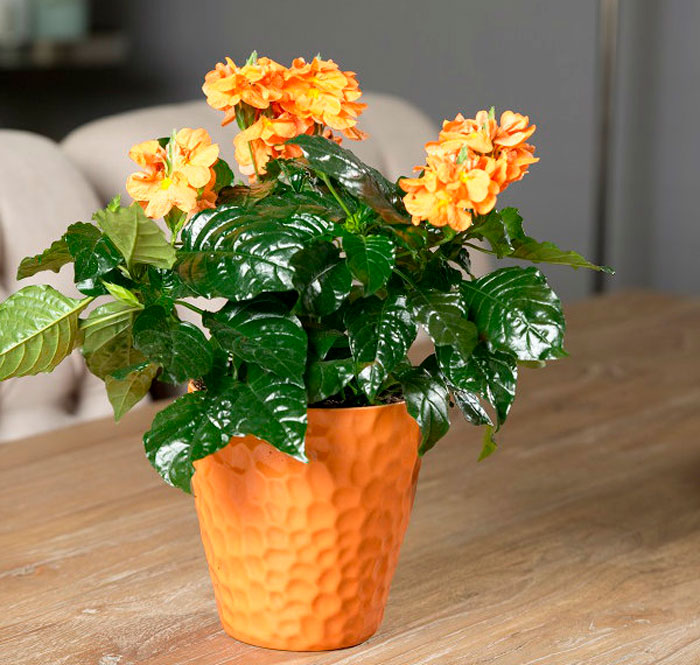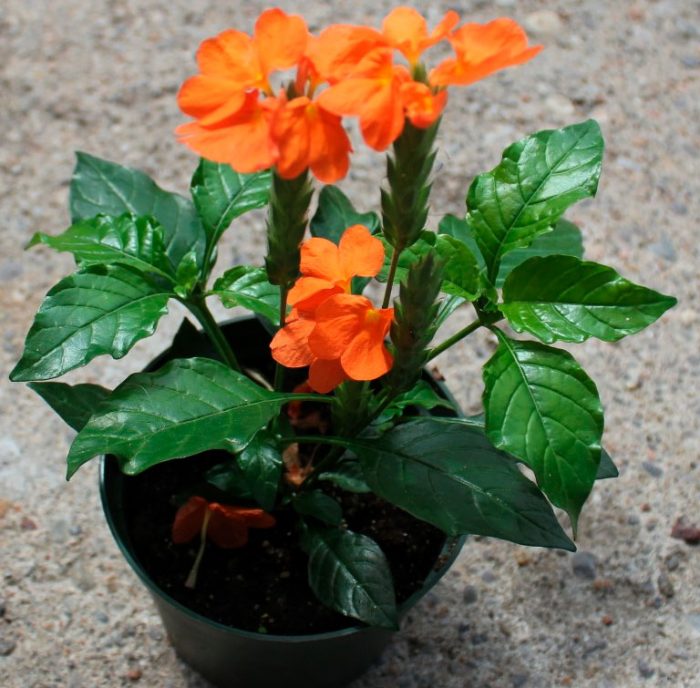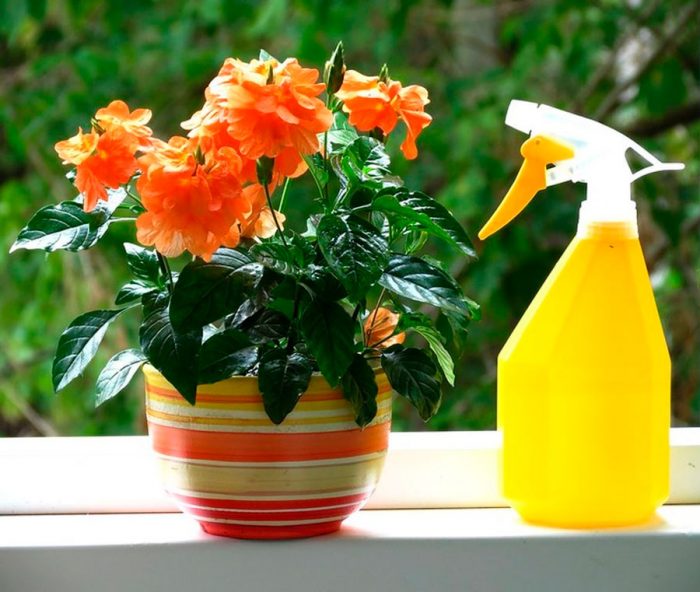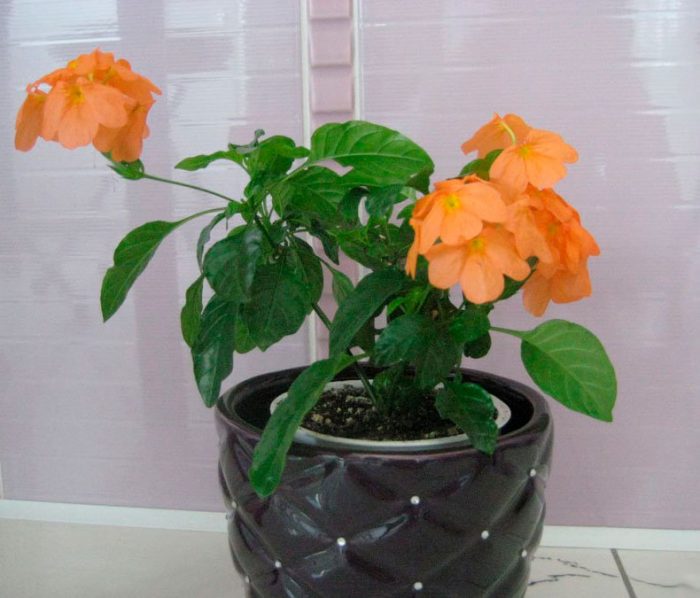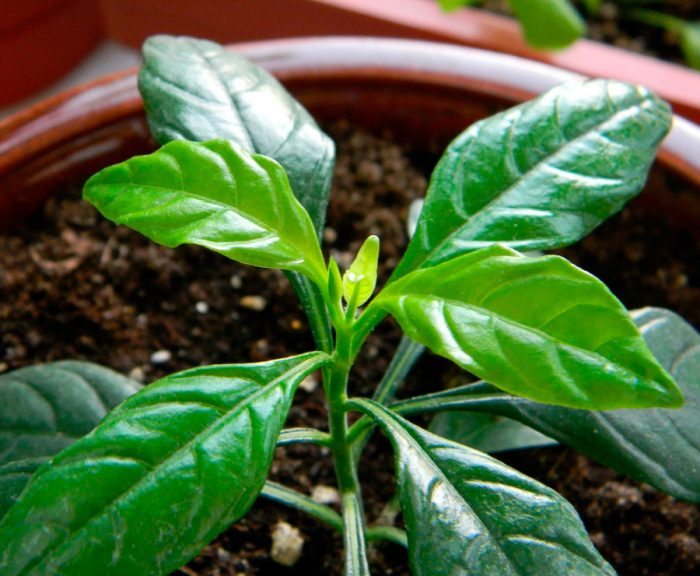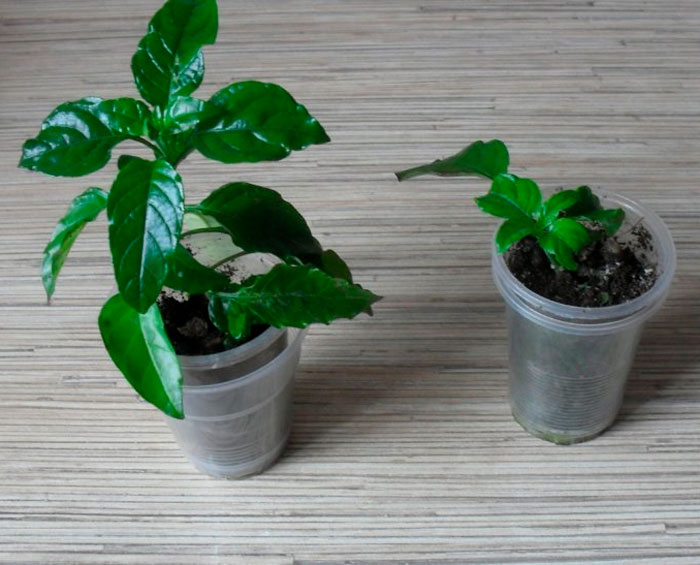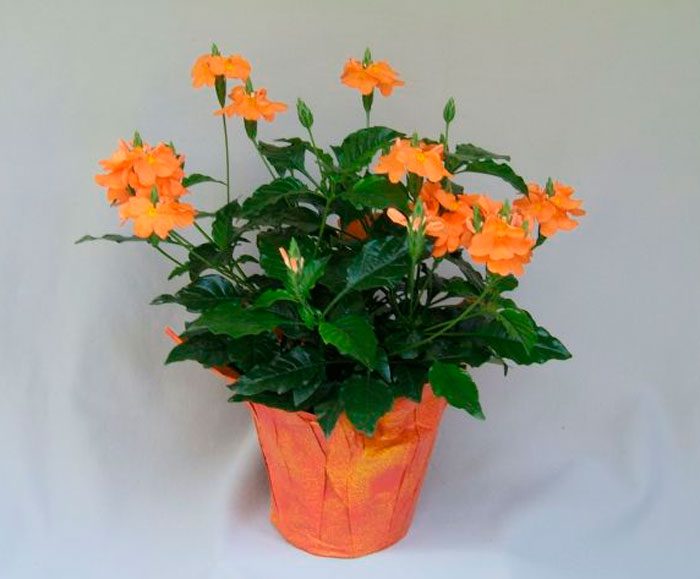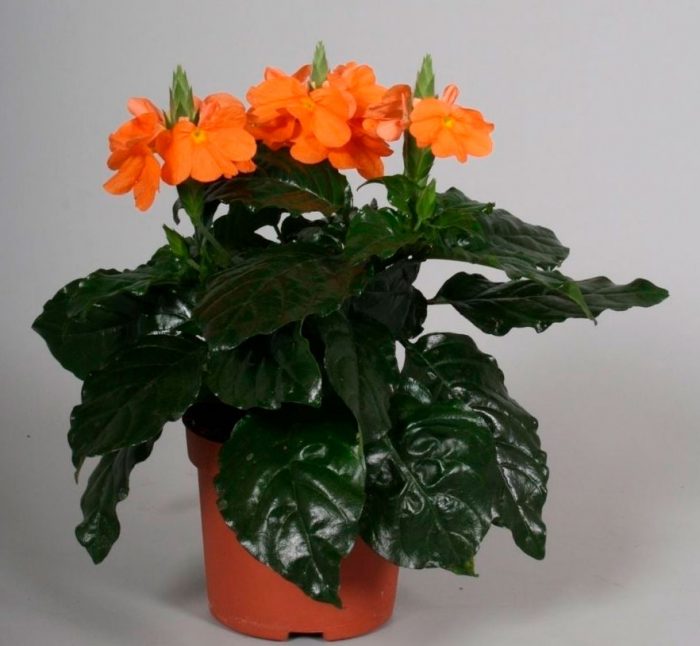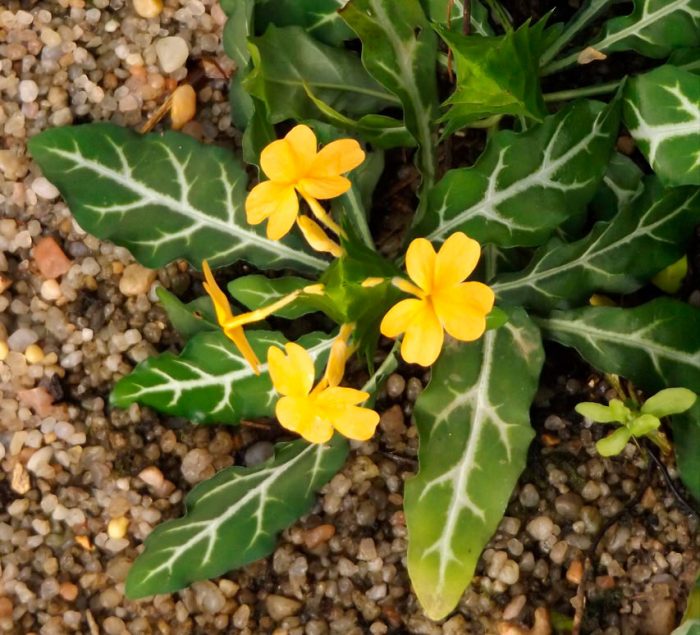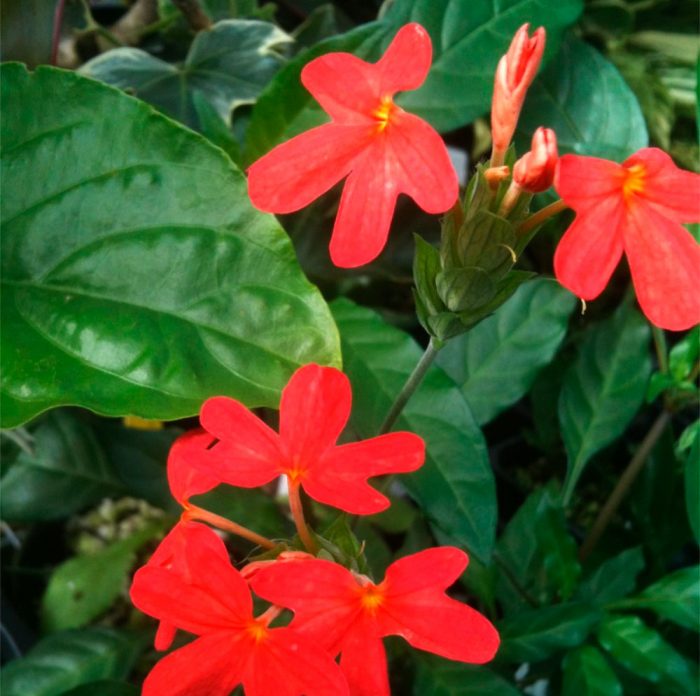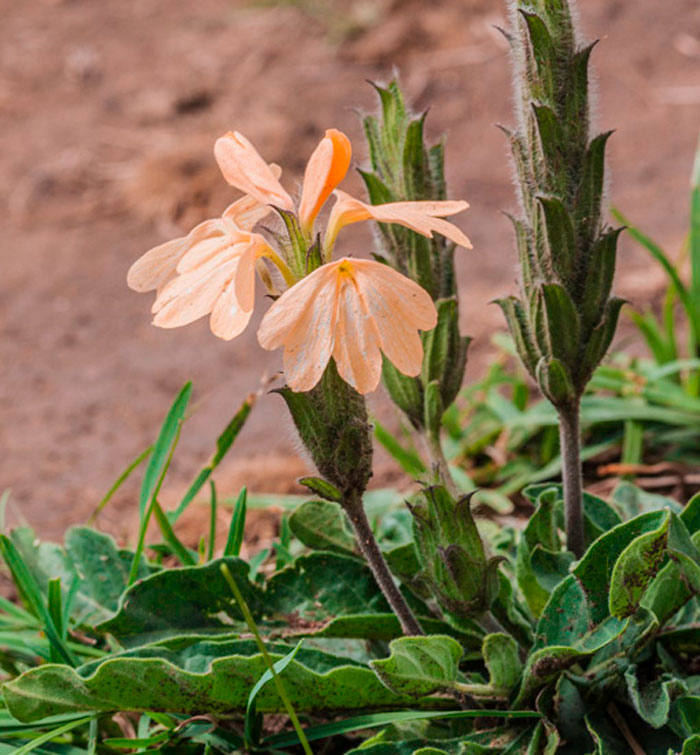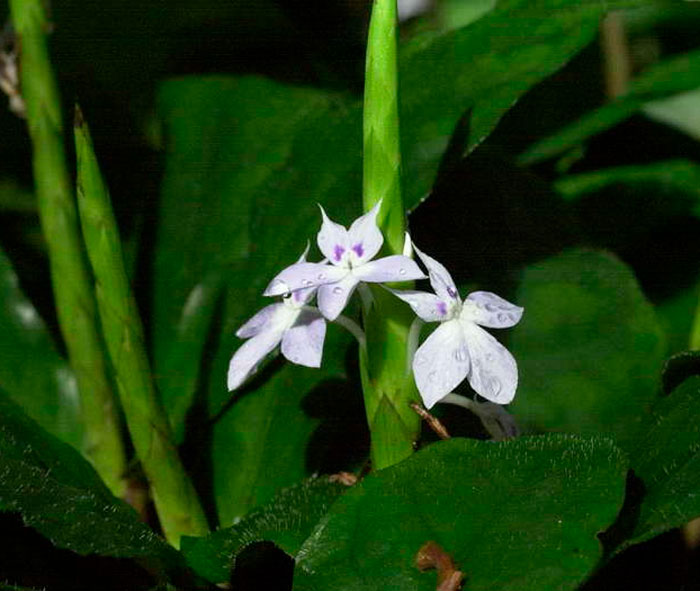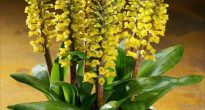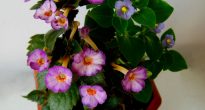Crossandra is a plant native to the tropics and is part of the Acanthus family. In nature, it can be found in the humid forests of India, Sri Lanka and Africa. To date, experts have found more than 50 species of this plant. The first in the 19th century in the culture appeared the wave-leaved crossandra or funnel-shaped. This type is most widespread in indoor floriculture, as well as its hybrids and varieties. It is also often grown in greenhouses.
Content
Brief description of cultivation
- Bloom... It starts in the spring and ends in the fall.
- Illumination... Light is needed bright, but diffused.
- Temperature regime... During the growing season, the temperature should be close to room temperature, and in the winter months - from 18 to 16 degrees.
- Watering... During the growing season, water abundantly immediately after the top layer of the substrate dries. During the cold season, watering should be moderate or poor.
- Air humidity... High. To do this, the air around the bush is regularly humidified from a finely dispersed spray gun, and it is recommended to pour expanded clay into the pan and pour in a little water.
- Fertilizer... They begin to feed the bush in spring, and when it fades, fertilization is stopped. To do this, use a mineral complex for flowering plants, which is introduced into the substrate 1 time in 15-30 days.
- Dormant period... From the time when the bush fades, and until the onset of spring.
- Pruning... It is carried out at the end of flowering or at the very beginning of the growing season.
- Transfer... While the crossandra is young, it is transplanted once a year, and when it grows up - once every 2 or 3 years.
- Reproduction... Most often by cuttings, but the seed method is also popular.
- Diseases... Plant problems can begin due to poor care or inappropriate conditions. For example, mold may appear on foliage.
- Pests... Spider mites.
Features of the crossandra
Crossandra is a semi-shrub that can reach a height of 0.3–0.5 m.Its glossy naked opposite leaf plates have a pointed tip and a dark green color, they can be wavy to varying degrees along the edge, and reach from 7 to 12 centimeters in length. During flowering, a dense axillary inflorescence is formed in the form of a tetrahedral spike. The flowers reach about 2.5 cm in diameter, and they are painted in salmon color. This plant is a very close relative of crops such as pachistachis, aphelandra and ruella.
Crossandra care at home
Lighting
Indoor crossandra needs a lot of bright diffused light. A western or eastern window is best suited for it. You can also put the bush on the window facing the south side of the room, but in this case it will need to be protected from direct sunlight in the afternoon. On the northern windowsill, the crossandra cannot grow normally. Due to poor lighting, it weakens greatly and refuses to bloom.
Temperature regime
During the growing season, the bush feels normal at an air temperature close to room temperature. Protect it from sudden temperature changes, as this can lead to foliage shedding. In winter, make sure that the room where the flower is located is not colder than 18 degrees.
Watering the crossandra
During the growing season, the bush is watered regularly and abundantly. This is done immediately after the surface of the substrate dries well to a not very great depth. In winter, the flower is watered less often and less abundantly, but at the same time they make sure that the clod of earth in the pot never dries out.
Water the crossandra with soft water. For this, well-settled (at least 24 hours) or filtered tap water is suitable. Its temperature should be close to room temperature or slightly higher.
Air humidity
Such a flower reacts extremely negatively to low air humidity. In this regard, it needs regular and frequent wetting from a sprayer. The fact is that the crossandra comes from the tropics. And there, after heavy showers, evaporation of moisture from the soil occurs very slowly, so the air humidity is almost always high.
Remember that it is not the bush itself that should be moistened from a finely dispersed spray bottle, but the air around it. Make sure that there are no drops of water on the surface of the foliage or flowers. Do not water the plant too often, as this can cause rot.
Top dressing
Crossandra growing in indoor conditions needs regular feeding. In the event that the bush will feel a lack of nutrients, then because of this it may lose its decorative effect. They feed him in the spring-summer period 1 time in 2 weeks, for this they use a complex mineral fertilizer. In winter, the potted soil may not be fertilized at all. However, if desired, feeding can still be carried out with a frequency of 1 time in 1-2 months. If the bush blooms in winter, then it is imperative to feed it. Do not forget that the nutrient mixture is applied to the substrate only after preliminary watering.
Crossandra transplant
Such a "guest from the tropics" growing in indoor conditions needs systematic transplants. At the same time, while the bush is young, this procedure is carried out at a frequency of 1 time per year. Adults, fully formed and well-developed bushes, are transplanted once every 2 or 3 years.
A suitable soil mixture should be fertile and loose. To cook it with your own hands, it is enough to combine peat, humus, sand, leafy and sod soil, which are taken in equal proportions. Do not forget to make a good drainage layer at the bottom of the container, this will help to avoid stagnation of moisture in the soil mixture.
Carefully transplant the bush from the old container into a new one, using the transfer method is recommended.Fill any voids with fresh substrate. The transplanted flower is watered, and when the water is absorbed, then, if necessary, more earth mixture is added to the pot. Make sure that there are no voids near the roots.


Watch this video on YouTube
Pruning
Pruning is carried out shortly before the growing season begins or at the end of the flowering of the bush. To do this, all stems are shortened by 1/3 part. After the bush begins to actively grow, they regularly pinch the tops of the shoots, in this case you will be able to form a thick and powerful bush. If you cut the crossander in a timely manner, it will positively affect its flowering, which will be lush, systematic and relatively long. But remember that from the fifth year of growth, the bush begins to bloom gradually worse and worse.
Reproduction methods
Homemade crossandra can be propagated either by cuttings or seeds.
Growing from seeds
Since the crossandra forms fruits, inside which there are seeds, infrequently, growers reproduce it in a generative way rather rarely. As for specialty stores, crossandra seeds are also not always found there.
However, if you managed to find seeds, then it will not be difficult to grow lush beautiful bushes from them. To do this, take a short, small container and fill it with a mixture of sand and peat (1: 1). Sow seeds in it to a shallow depth. From above, the crops are covered with glass or film, after which they are rearranged to a warm (about 23 degrees) place, while you must not forget to systematically remove condensate from the shelter, as well as timely moisten the substrate from the spray bottle.
The first seedlings should appear after a few weeks. Once this happens, remove the cover. And when the bushes form 2 pairs of real leaf plates, they need to be cut into individual small pots or cups. When the transplanted seedling takes root and begins to grow, it is regularly pinched so that the bush is more lush.


Watch this video on YouTube
Cuttings
You can easily and quickly propagate such a tropical plant by cuttings. To begin with, you need to prepare cuttings, for this the stems are cut into pieces about 10 centimeters long. Remove the two lower leaf plates from the segments, after which they are placed in a container of water for rooting. When the roots of the cuttings reach a length of 25 mm, they can be planted in a soil mixture consisting of peat and sand, which are taken in equal proportions. After the cuttings have taken root, they are provided with the same care as the adult specimens.
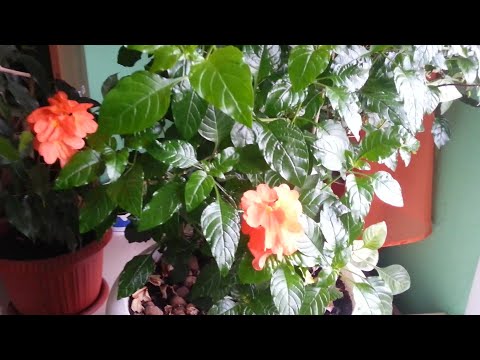

Watch this video on YouTube
Pests and diseases of the crossandra
Diseases of crossandra and their treatment
Since crossandra prefers high air humidity, leaf mold often develops on it. It can be recognized by gray fluffy specks on the leaf plates. As soon as you find them, immediately cut out the diseased parts of the foliage, capturing healthy tissue. After that, treatment is carried out with a solution of a fungicidal preparation. In order for the flower to recover completely, do not forget to adhere to the watering rules, and also monitor the humidity in the room.
Due to non-observance of the rules of care with the crossandra, the following problems may arise:
- Withering and flying of foliage... This can happen if the bush is watered too rarely or poorly. Also, this may be due to a sharp change in temperature in the room.
- Insufficient flowering... This may be due to the fact that the bush is already very old or it was cut incorrectly. This also happens when the crossandra feels a lack of light.
Pests
If there is dry air in the room, then spider mites can settle on the plant. They are so small that they cannot be seen with the naked eye.This is precisely why they are dangerous, because ticks can be detected only when there are a lot of them on the plant. In this case, the thinnest cobweb can be seen on the bush.
If there are few pests, then you can try to get rid of them by washing the flower under a warm shower. If there are a lot of ticks, then they can only be destroyed with a special acaricidal agent. To do this, you need to purchase Aktar, Fitoverm, Aktellik or Akarin in a specialized store.


Watch this video on YouTube
Types and varieties of crossandra with photos and names
Funnel-shaped crossandra (Crossandra infundibuliformis)
Either orange or wave-leaved - the height of such a subshrub can vary from 0.3 to 0.9 m.However, when grown indoors, the bush, as a rule, does not exceed 0.6 m.Its narrow leaf plates, pointed at the top, in length reach 12 centimeters and have a characteristic wavy edge. Five-petalled tubular flowers have a large green bracts. They are painted in an orange-pink hue, and their middle is yellow. The flowers are part of the spicate tetrahedral inflorescence, which is about 10 centimeters long.
The best varieties:
- Mona wellhead... This variety is very popular in indoor culture. The height of the bush is about 0.45 m, and it is decorated with pink-salmon flowers.
- Tropic... The compact bush reaches 20 centimeters in diameter and 25 centimeters in height. This variety can be cultivated both at home and in the garden as an annual plant. This series includes several varieties that differ from each other in the color of the inflorescences:

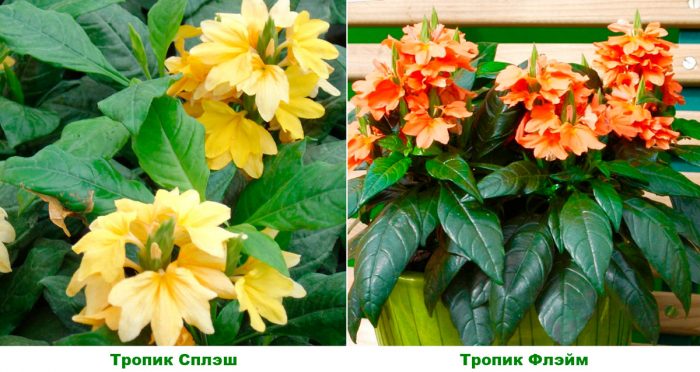
- Tropic Splash - at the base, the petals are painted in a dark yellow tint, while at the tops they are lighter;
- Tropic Flame - inflorescences of orange-salmon color.
- Orange marmalade... The height of the bush of this cultivar is about 0.6 m, it is decorated with flowers of a rich orange hue.
- Queen of the nile... Inflorescences are painted in a rare terracotta shade.
- Crossandra Fortune... The compact bush has a powerful root system, so it is more resistant to low air humidity and sudden temperature changes. The flowers are orange-salmon.
Prickly crossandra (Crossandra pungens)
This species is native to East Africa. The height of the bush is 0.4–0.6 m, its lanceolate leaf plates of variegated color have petioles. The surface of the foliage is decorated with veins of a silvery hue. The size of the foliage directly depends on where they are located: the upper plates are 60 mm long and 15 mm wide, and the lower ones are 120 mm long and 25 mm wide.
Red crossandra (Crossandra nilotica), or Nile crossandra
In nature, the bush can be found in Kenya and Mozambique. The height of such a shrub is about 0.6 m, its glossy, dense leaf plates of dark green color have an elliptical shape. Short apical inflorescences consist of tubular five-lobed flowers of pink-salmon or brick-red hue.
Stem crossandra (Crossandra subacaulis)
This plant is rarely grown by flower growers, most often it can be seen from collectors. The homeland of such a stunted flower is the eastern part of Africa, namely: Tanzania, Congo, Kenya and Uganda. The height of the bush is about 15 centimeters. The rich orange flowers are collected in inflorescences, the length of which does not exceed 10 centimeters.
Guinea crossandra (Crossandra guineensis)
This species can be met just as infrequently. The height of the bush is about 20 centimeters, its surface is covered with a short nap. The short-peaked green leaf plates have pronounced veins on the seamy surface. Light lilac or white flowers reach 20 mm in diameter, they are collected in narrow spikelets, the length of which is 5-15 centimeters.
Also in room culture, turquoise or blue crossandra is often found. However, this plant is part of another genus of the Acanthus family, which is called the Ecbolium.
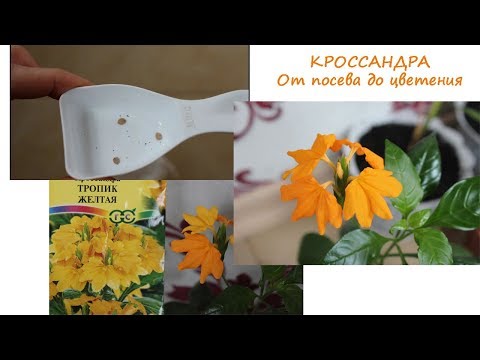

Watch this video on YouTube

